While watching the sexual and pugnacious antics of these sandpipers I described the situation as a “sex circus” to my shooting companion. Not far from the truth if you ask me (although of course I have no personal experience with sex circuses…).
Note: Some of the following photos are softer than you’re used to seeing from me. In some cases the softness was due to the challenges of photographing multiple birds in flight or involved in very quick action. In other cases the cause of the softness is unknown – it just happens sometimes. But I think all of the photos are sharp enough for documentary purposes.
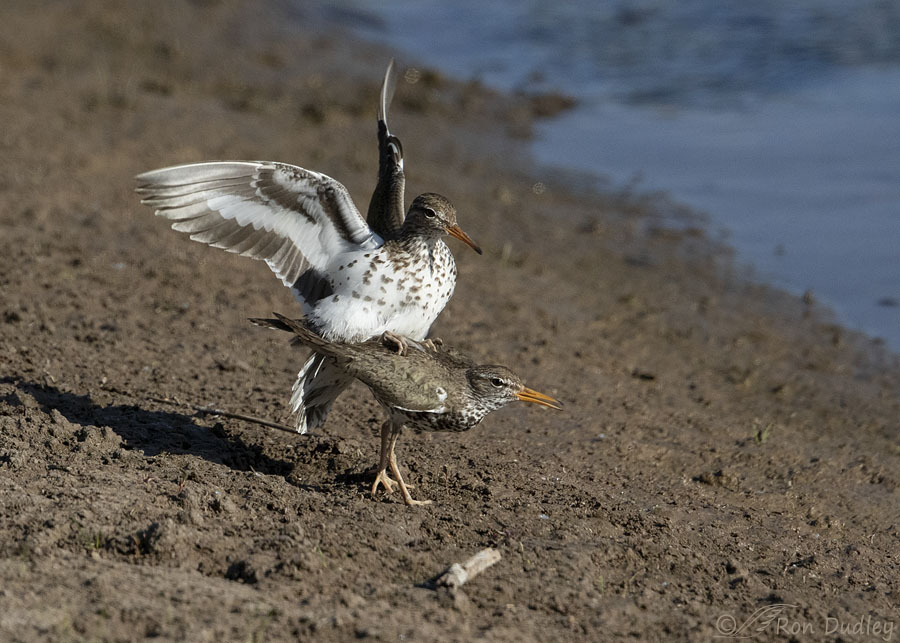
Four days ago along the shore of a mountain stream this pair of Spotted Sandpipers felt the urge to mate.
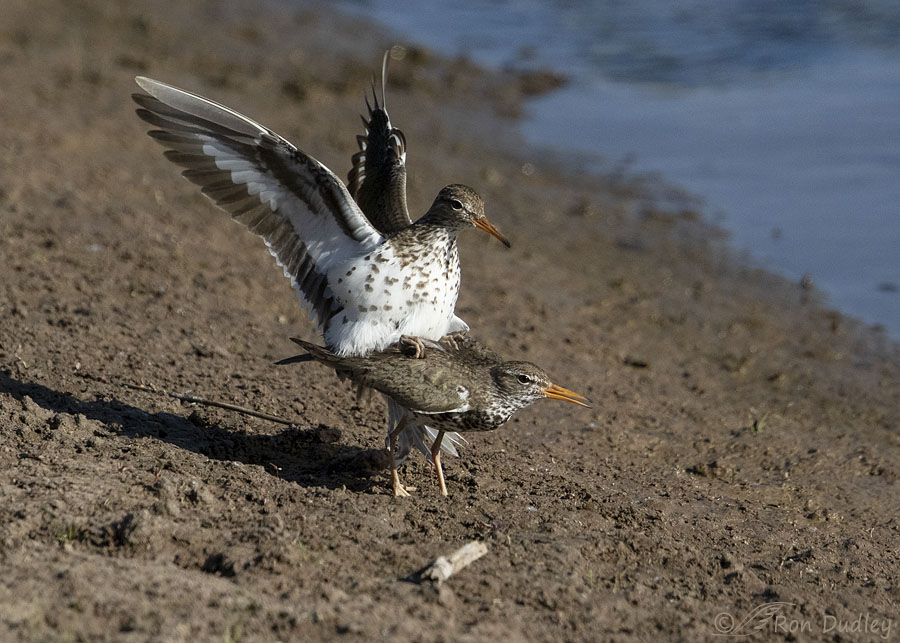
It was a rather long and drawn out affair. When the act had finally been completed the male actually stood on top of her for a few moments as if to relish his accomplishment but I’m not including those shots because their faces were mostly shaded.
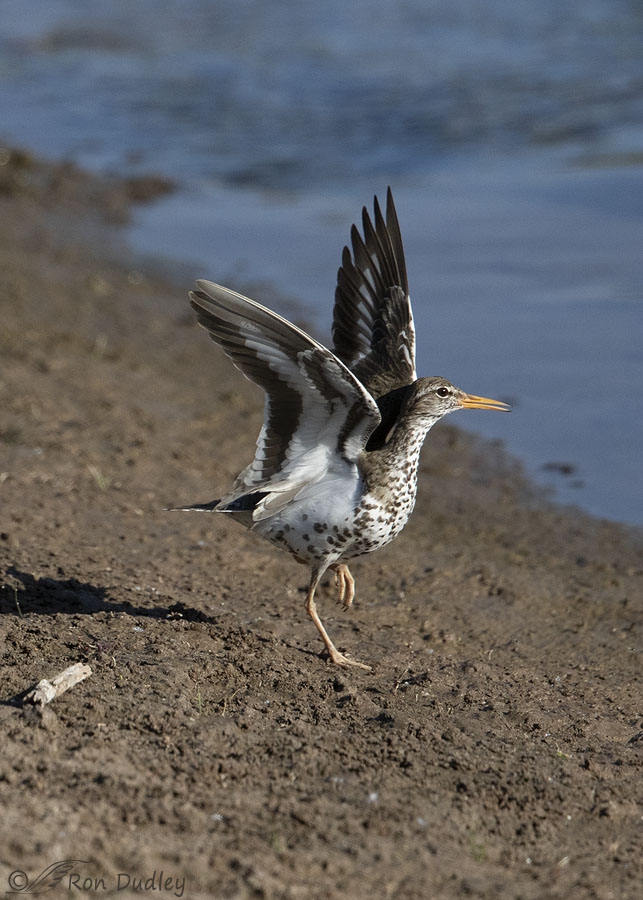
When the male dismounted the female she raised both wings almost immediately. In my experience this is fairly typical behavior for the females of a variety of shorebirds and wading birds after mating. But what happened next was far from typical.
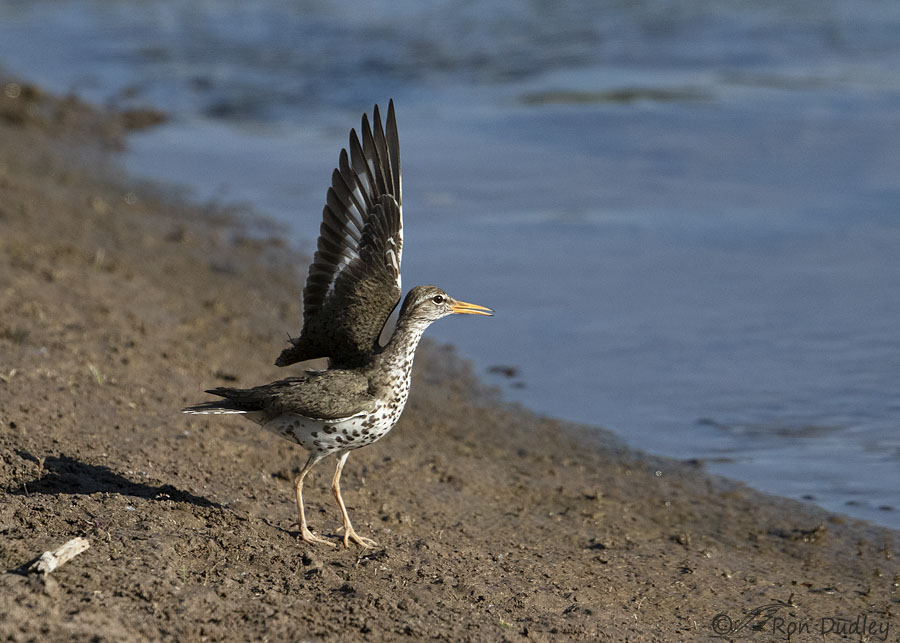
She folded her right wing, kept her left wing raised vertically and…
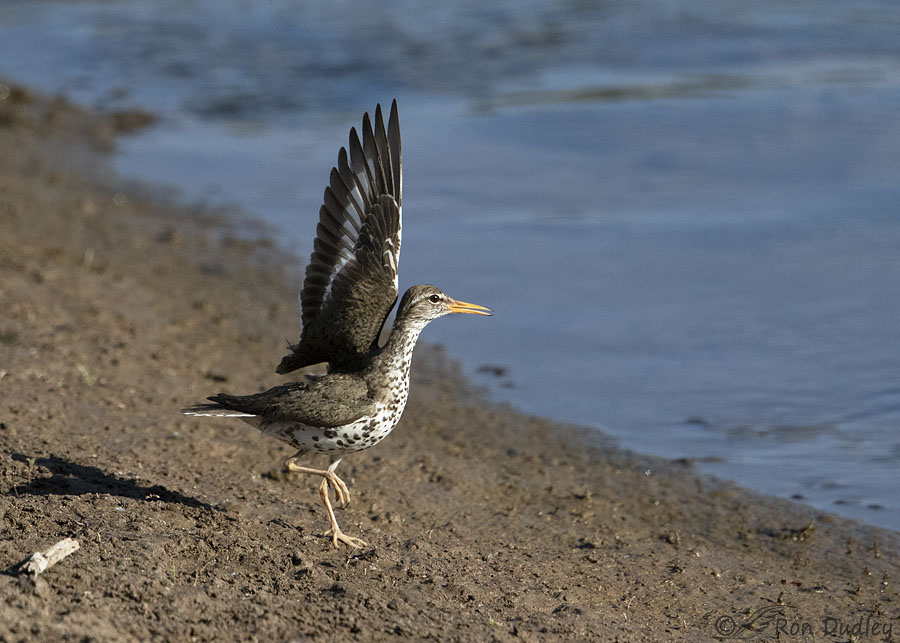
began a very slow walk to the shore with her wing in that position.
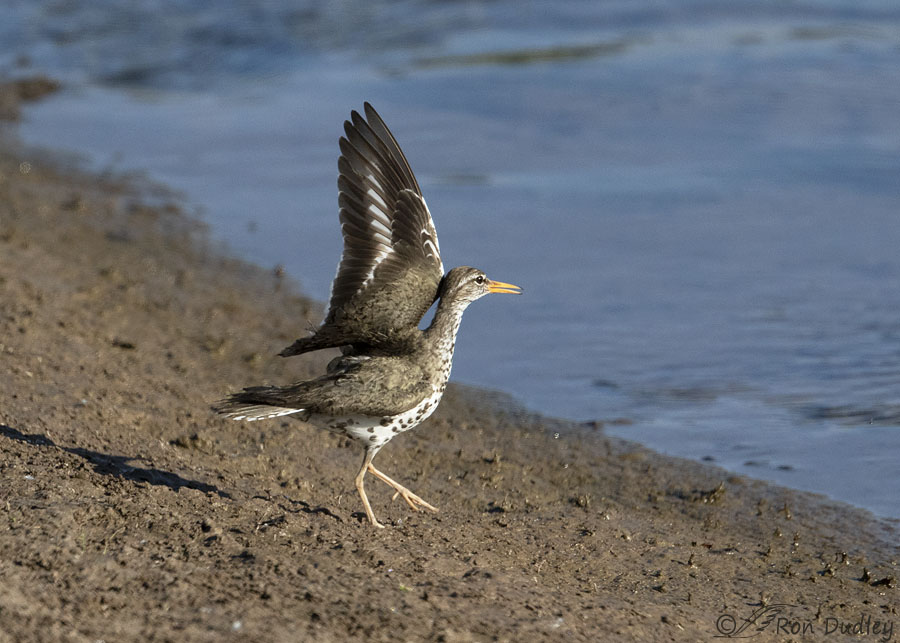
Fifteen photos later she still had her left wing raised vertically and her right wing folded.
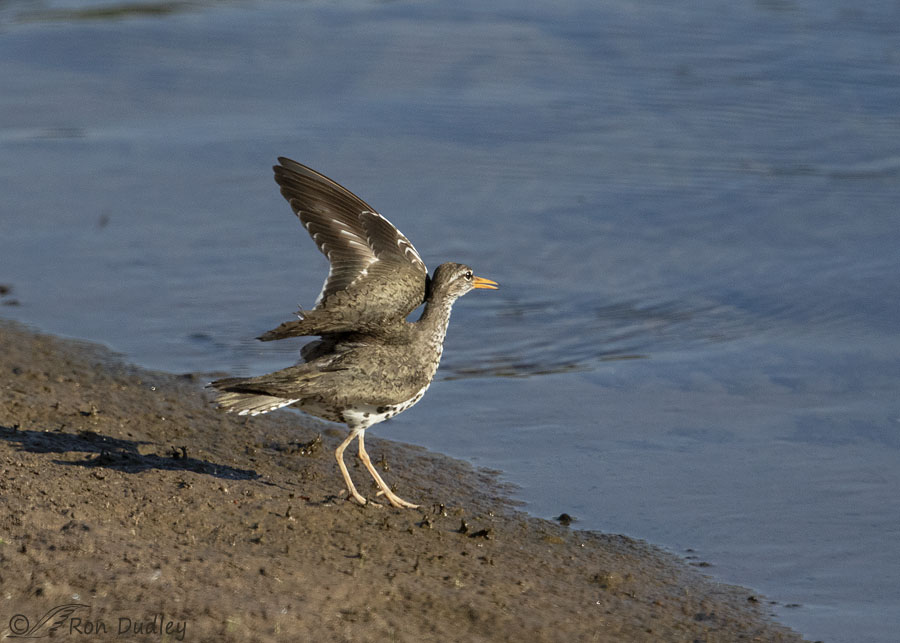
Finally, 25 photos after that, she began to lower her wing just before she reached the water.
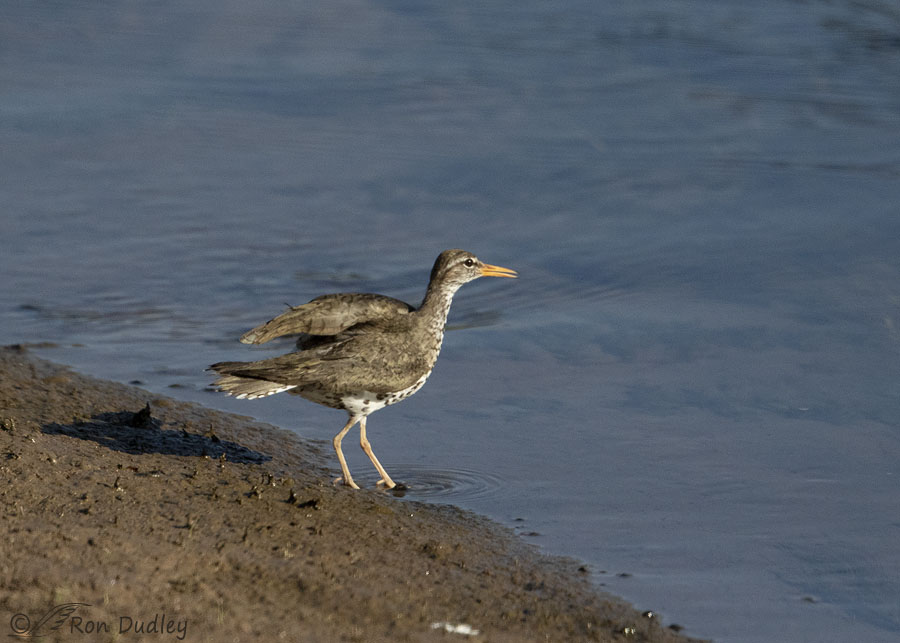
When her first tippy-toes touched the water she folded her left wing completely and then soon took off.
As I said, in this situation two raised wings is typical behavior in some birds but a single raised wing is unique in my experience. I don’t know if it was a quirky behavior of an individual bird or fairly typical of the species. I tried to research it but struck out. Either way I was pleased to be able to document it.
It was immediately after the mating that all the real excitement began.
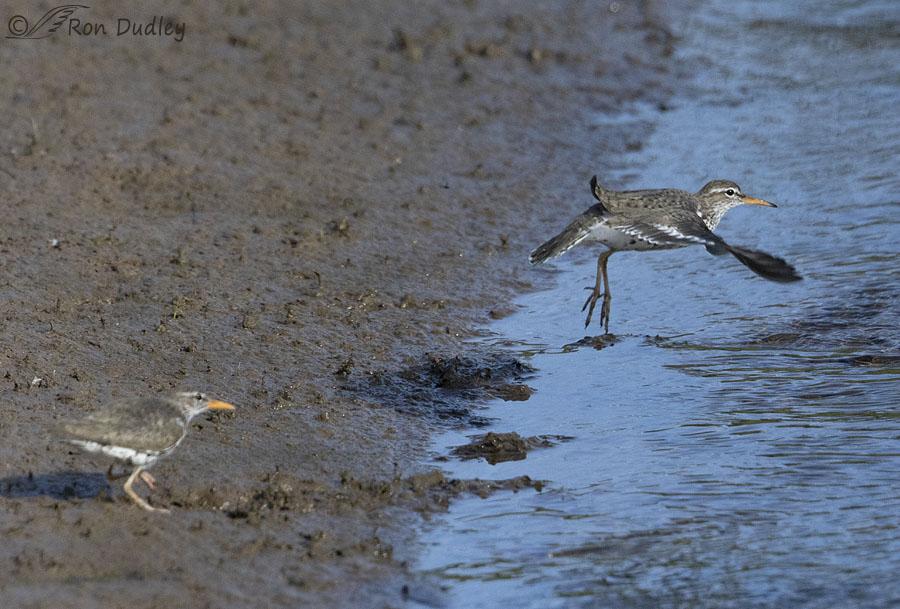
The male began to chase the female, at great speeds both in flight and on foot, all around both shores of the stream.
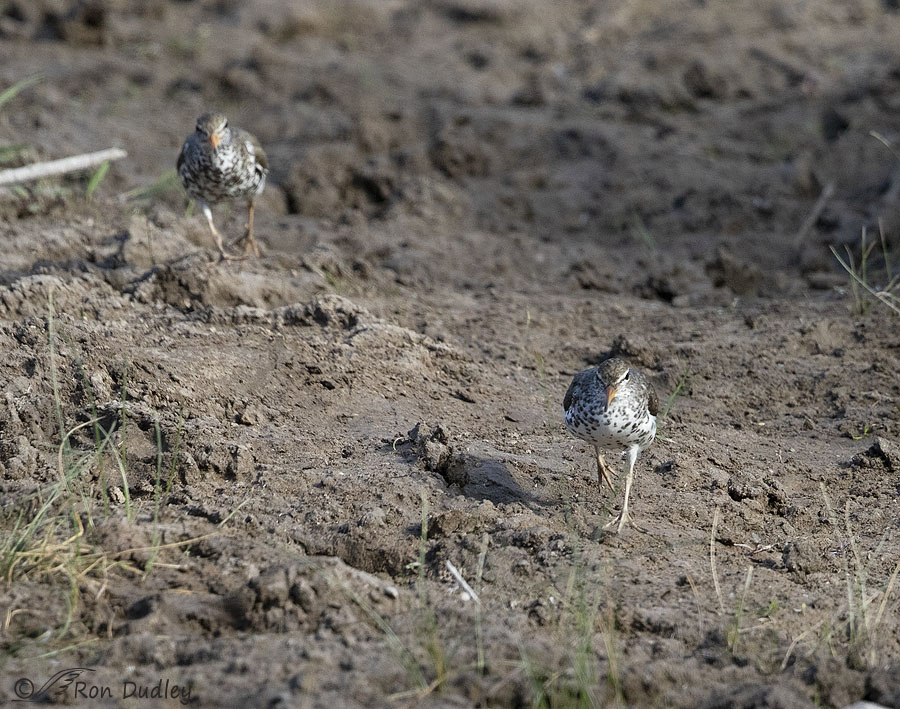
He was relentless and she seemed just as determined to keep away from him. The incredible speed of these little birds made the behavior very difficult to photograph but I think this shot shows that both birds were running very fast.
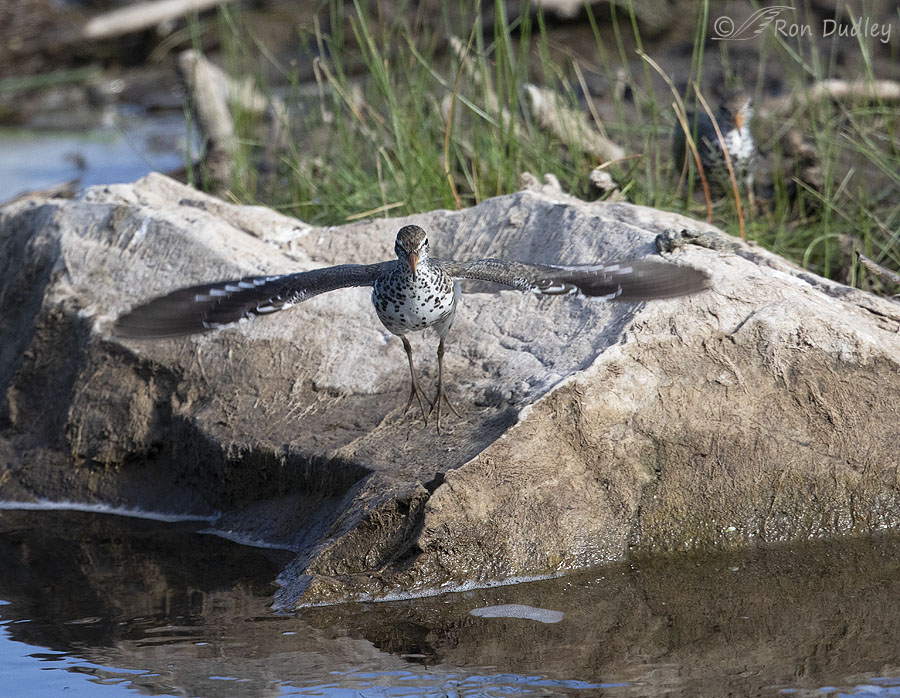
She topped this large rock with the male still in pursuit (at upper right) so she made her getaway.
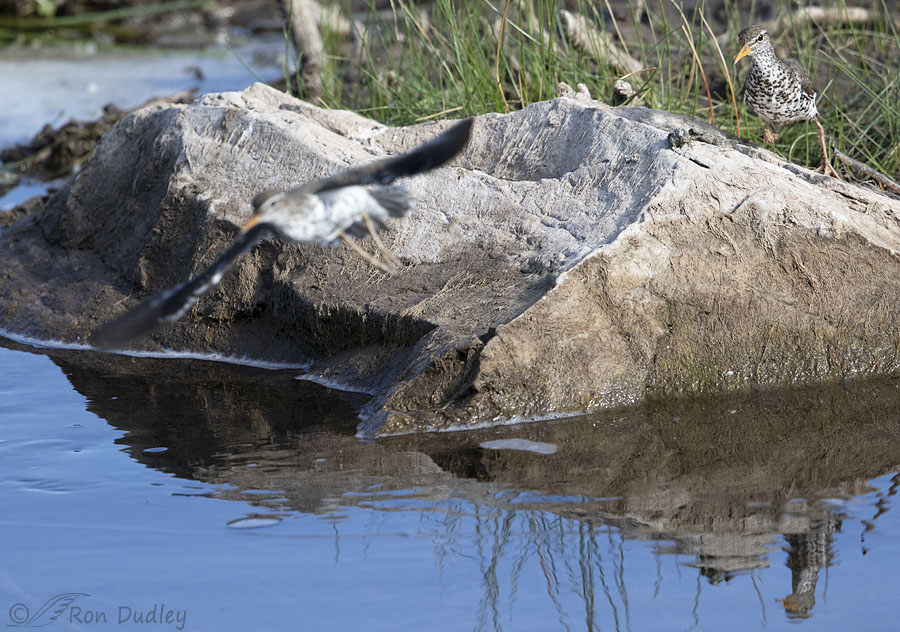
This next photo, taken 1/10th of a second later, shows the male already at the top of the rock. That should give you some idea of their speed. I like his reflection at bottom right.
It was at about this point that two other Spotted Sandpipers joined in the fray. They came from out of nowhere and all four birds were buzzing around, in flight and on the ground, as they chased each other and sounded their alarm/aggression calls. It was a frenetic and noisy scene and it was all hormone-driven.
This is when I said out loud “This reminds me of a sex circus”.
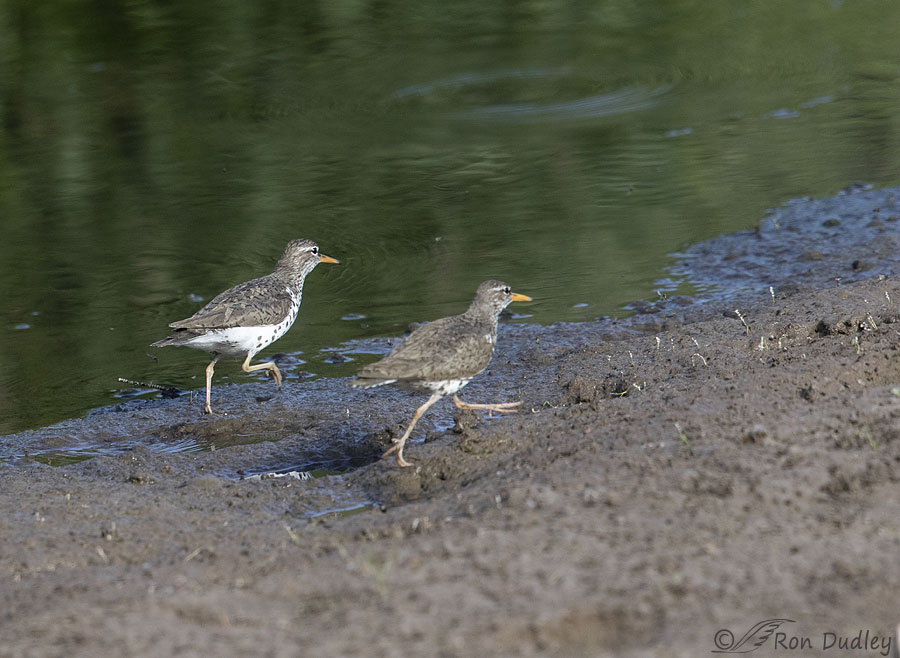
At times, what I believe to be the original male seemed to be guarding the female rather than chasing her, but it went back and forth so it was often impossible to interpret what was really going on.
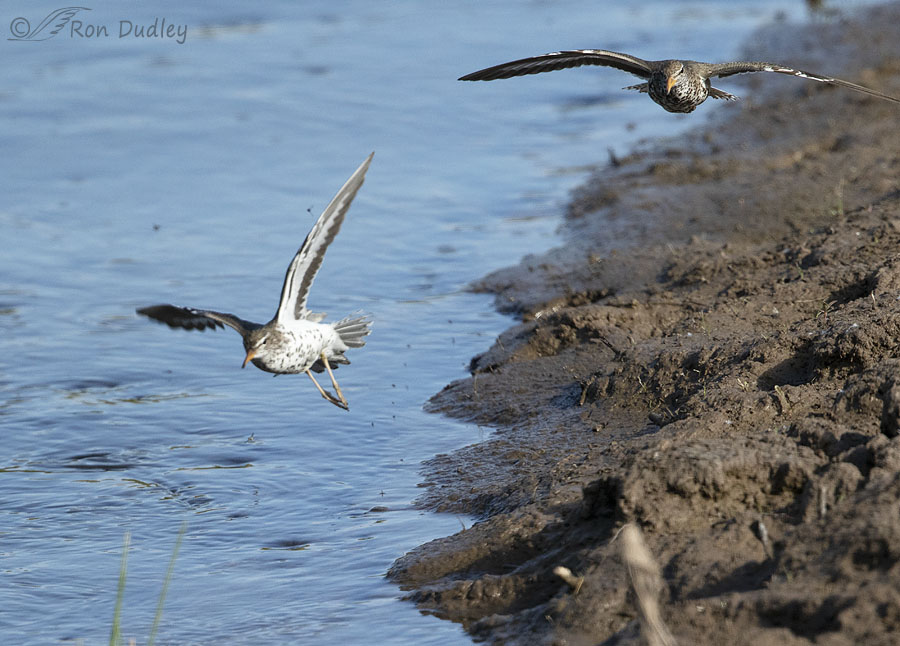
Here the female has one of the males in pursuit of her but I don’t know which one.
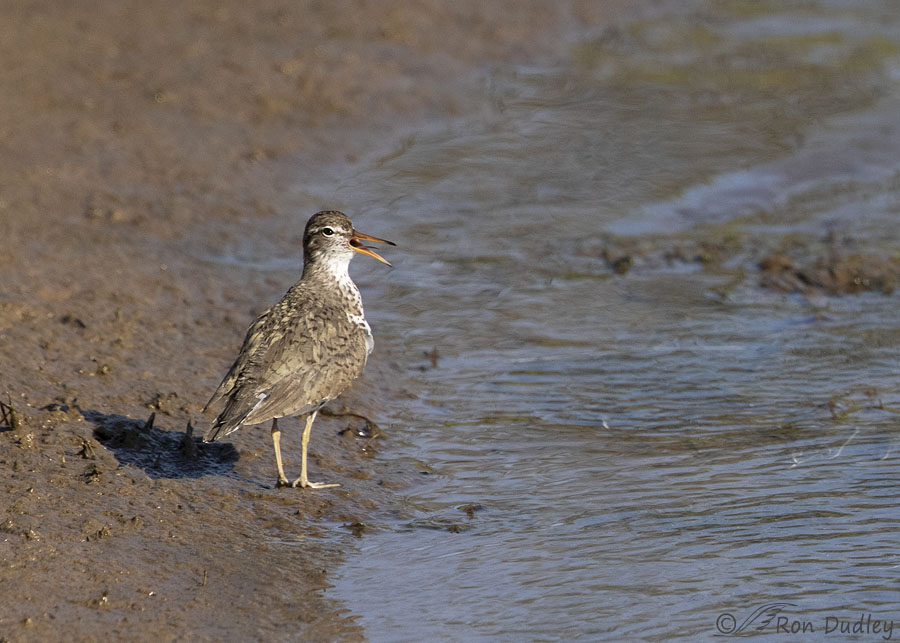
I found the sounds from the four highly excited and calling sandpipers to be almost as attention-getting as all the bird bodies zooming around in the air quite close to me. Believe me, these little birds can make some noise.
Perhaps it was inappropriate of me to refer to Spotted Sandpipers as “oversexed” in my title but remember, all of this was hormone-driven and I don’t believe I overstated things when I referred to them as “highly aggressive”. Cornell’s Birds of the World has this to say about Spotted Sandpiper aggression during breeding season:
“During breeding season, chasing and fleeing observed in all social contexts in which aggression normally occurs: mate acquisition and defense; sexual pursuit and avoidance; and defense of nests, young, and territories. Intense chasing and fleeing occur most often in association with female-female competition for mate. Female fights may continue for up to 1 h, with birds in direct contact for about half of the total time. Injuries to legs, eyes, and wings are common. Females also chase and harass their mates when males temporarily stop incubating and leave nest. Female chasing of mates intensifies when female begins courting new male on her territory. Males fight intensely when there is a shortage of mates or to gain access to a particular female. Males also fight to defend their young and the area the chicks inhabit. Danger to chicks from unrelated adults is severe; chick skulls were fractured in 2 of 10 attacks by neighboring individuals.”
This chasing behavior lasted for 24 minutes after I photographed the mating sandpipers with only a couple of very brief pauses. Eventually I figured I’d taken more than enough photos so while they were still going at it I left the area to look for other birds.
But it was great fun for that 24 minutes
Ron
Note: In Spotted Sandpipers sexes are very similar with only slight differences so it’s possible that in this post I’ve referred to a male that was actually a female, or vice versa. The fact that females sometimes chase males makes such an error on my part even more likely.


Thanks for the giggles! After I looked at your images and read your comments, all I could think of are the Mourning Doves around my house. Once the hormones kick in they have no shame. Anywhere at anytime. I can’t count the times I have said out loud to them “Get a room!”
Yup, Mourning Doves and Mallards need to get some urges under control…
Sorry, Ron. I’m an old, old lady and stories like this are just all about human behaviour for me. And I really hope I can “go” laughing like this.
🤣😂🤣😂 Thanks for the fun. (I’ll get serious about documenting avian species behaviour in my next life.)
No need to apologize, Pat. I see the humor too.
Them birds certainly didn’t accept that no meant no did they? I am still pondering Dan’s statement about the testosterone divide…
It’s true, EC. When I’ve been researching other Spotted Sandpiper posts I’ve read pretty much what Dan said on Birds of the World and elsewhere. I know you weren’t doubting him but I just wanted to reinforce what he said.
Having viewed testosterone driven behaviour over the years I wouldn’t count that as a positive.
Nor would I. Not usually.
The one-wing thing is intriguing, whether it’s a one-off or a breeding behavior. In any case, a thought-provoking post.
Testosterone: Can’t live with it and can’t live without it?🤔
“Testosterone: Can’t live with it and can’t live without it”
Boy, ain’t that the truth. At my age I live without it mostly and that’s a relief in so many ways…
Great series. I have seen other shorebirds raise both wings and lower only one, but not for an extended period as in this case.
Spotted Sandpipers are an interesting species. Females are slightly larger and usually more aggressive, although males will certainly fight to defend a nest. Females actually have higher testosterone levels than do males and it is the females that do the courting. Sometimes a female will help with nest duties but most often, incubation and raising young is the male’s responsibility. A female may defend a territory that can have up to four males on nests. This sex-role reversal is not as well-defined as in phalaropes but it tends to be dominant in sexual behavior of this species.
“Females actually have higher testosterone levels than do males”
Now that’s an interesting quirk, Dan. Makes some sense though, given their reversed roles. Thanks for the info.
WOW! The energy the expend in these hormone driven frenzies is amazing! Surprised there aren’t more injuries than there appear to be. The one wing up IS interesting. Surely a challenge to capture all the action – challenge met! 🙂
Thanks, Judy.
Remarkable, educational, and very interesting series. I have seen the mating behavior of Mourning Doves out back where two males are often trying to mount the same female, and of course the frantic efforts of the Mallard males attempting the same in the water, but the only thing I have seen Sandpipers do is travel up and down the shorelines looking for food.
Thanks for posting the Cornell information. Very surprising all that goes on in their mating and nesting lives.
Thank you, Everett. This was the first time I’d seen these behaviors.
What an interesting and educational post! And what a serendipitous 24 minutes. Those are some mighty feisty birds!
I wonder if the male may have tweaked her left wing in such a way that she needed to stretch it out. In the 2nd shot, it looks like he’s pushing on it at an odd angle with his left foot.
“I wonder if the male may have tweaked her left wing”
Your guess is as good as mine, Marty. But when she took off she flew normally so my guess would be no.
Welcome back. I hope you enjoyed your time in the mountains.
It was wonderful! im tempted to see if there’s a small cabin for sale in the area.
Always enjoy your pics and your narrative, just wondering…….on the shots toward the beginning where the male is chasing the female, and she is on the rock….are there two little lizards on the top of the rock, watching the whole scene transpire?
Karen, I blew up the high res images but I’m not seeing any lizards on that rock, only what looks like other rocks.
Wonderful documentation of this behavior. You have added to the fund of knowledge by capturing the one-wing wave. Good catchy title (“click-bait”).
Thanks, Kenneth. Good catchy title or click-bait – whatever works as long as it’s accurate…